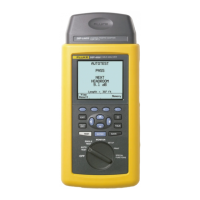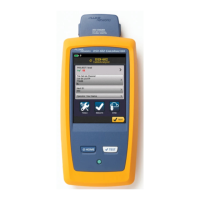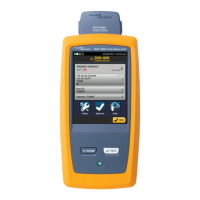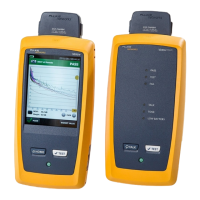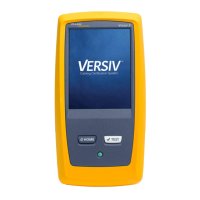DSP-4000 Series
Users Manual
2-32
Performing a Self-Test
The self-test verifies that the test tool, link interface adapters, and remote are
operating properly. To run the self-test, proceed as follows:
1. Turn the rotary switch to SPECIAL FUNCTIONS. Turn the remote on.
2. Use D to highlight Self Test.
3. Press E.
4. Use the DSP-4000 Calibration Module to connect the test tool to the remote.
5. Press T to start the self-test.
6. When the self-test is complete, you can either return to the main Special
Functions menu by pressing e or start a new operation by turning the rotary
switch to a new position.
If the self-test fails, refer to “If the Test Tool Fails” in Chapter 8.
Overvoltage Test
The test tool periodically checks for dc voltages on twisted pair cabling under test.
A dc voltage means that the test tool is connected to an active telephone cable or
other power source. If voltage is detected, the following message appears:
WARNING! EXCESSIVE VOLTAGE DETECTED AT INPUT.
UNPLUG CABLE NOW!. The remote unit beeps and all LEDs flash
continuously. Voltage on the cabling can damage the test tool or cause errors in
measurements. Voltage must be removed before you can run any tests.
Always turn on the test tool before connecting it to a cable. Turning the test tool on
activates the tool’s input protection circuitry.
